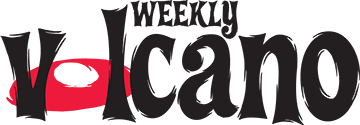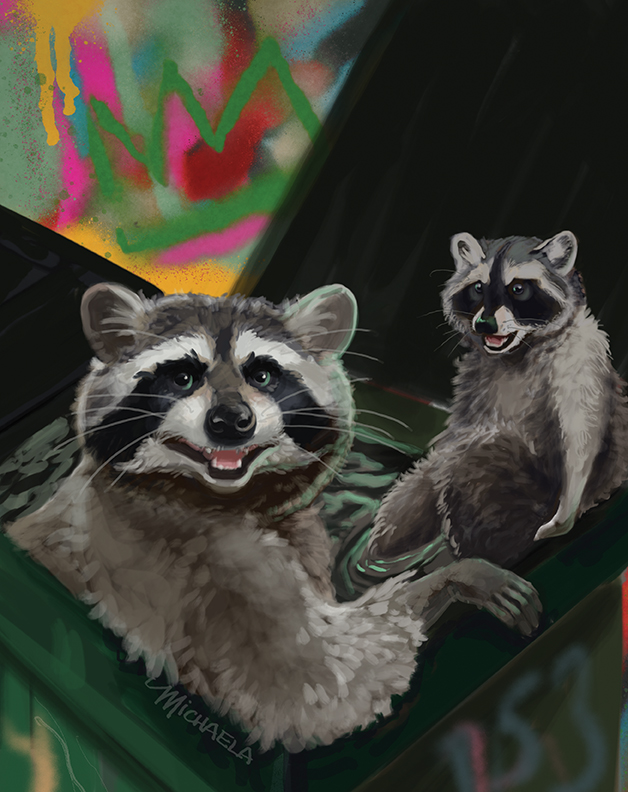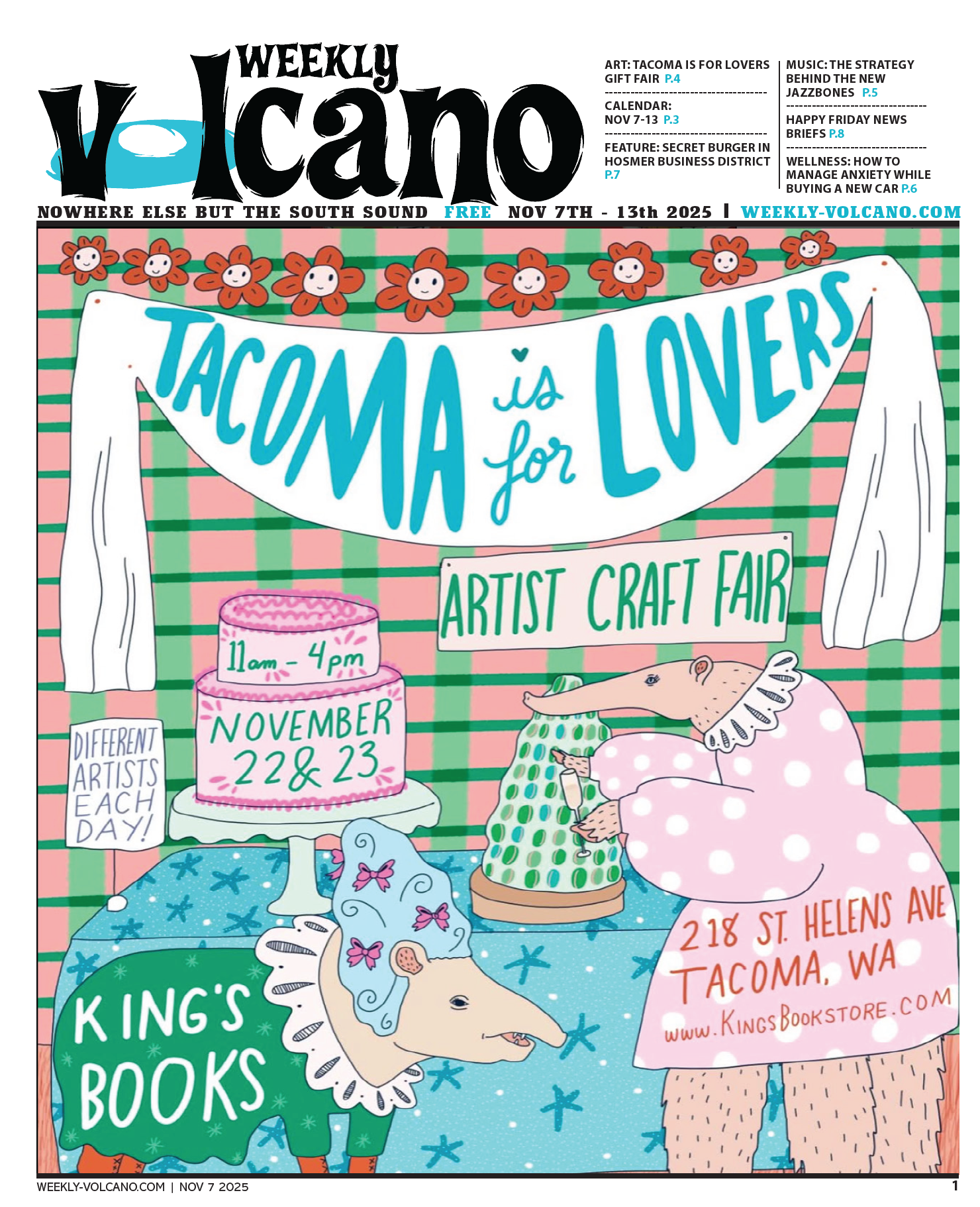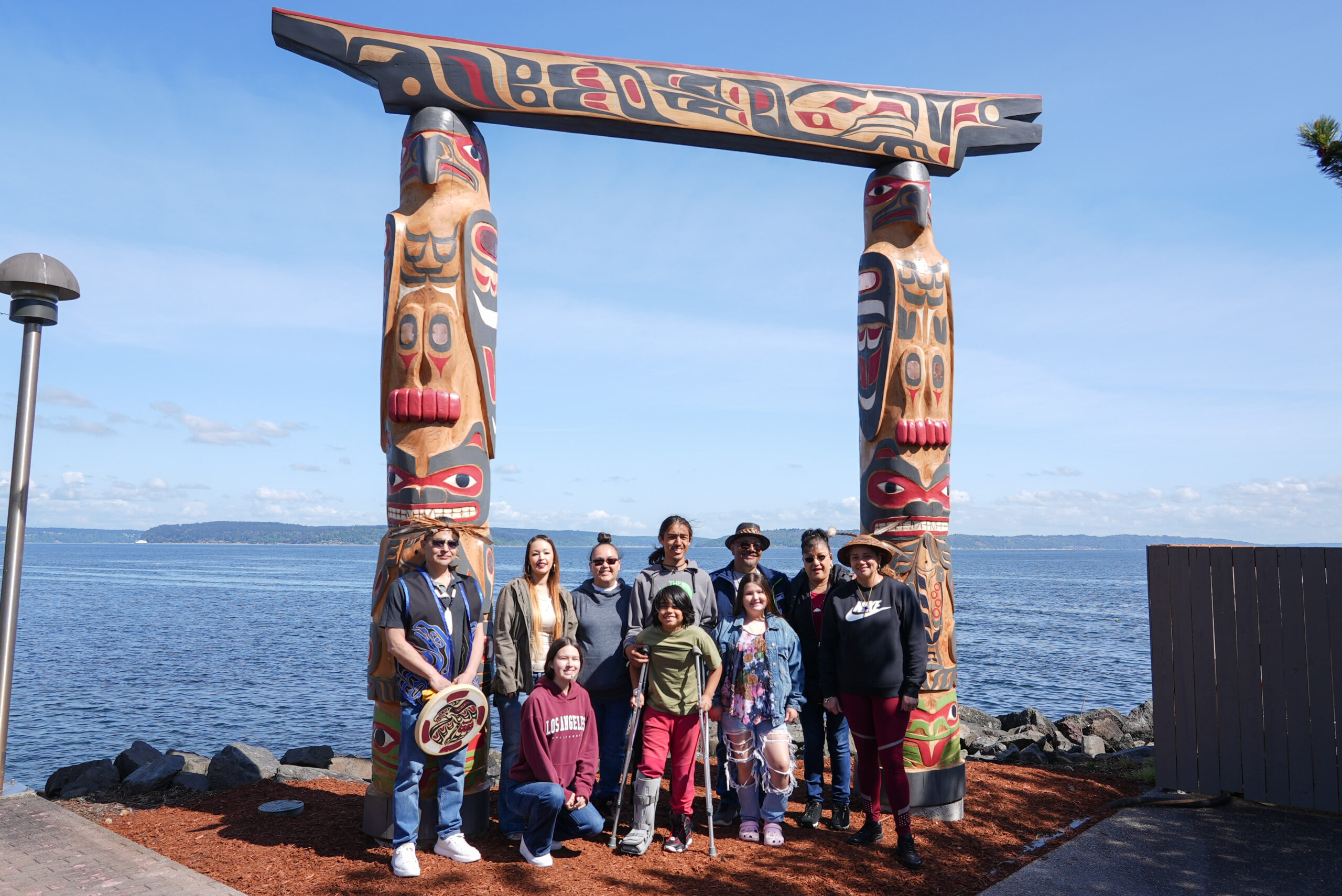By MATT KITE for Weekly Volcano | March 2025
Long-time Tacoma artist Michaela Eaves can trace her signature style to her early childhood in Germany, where she was born. Dark yet whimsical, her artwork is steeped in fairy tales and nature—much like the children’s books her grandfather shared with her before she moved with her family to the US. Der Struwwelpeter (“Shock-Headed Peter”) and Grimms’ Fairy Tales captured her imagination with a fun-but-spooky kind of magic.
“They were mostly brutal stories to tell your children about consequences,” Michaela quips.
Today, Michaela’s artwork graces everything from poetry books to album covers, but the 50-year-old artist is best known for her 42 Sketches, an ongoing project she first started nearly two decades ago. Since 2006, she has begun each year by drawing one piece a day for 42 straight days.
“I grew up with people who would say things like, ‘I used to draw, and I wish I would have stuck with it,’” Michaela explains. “I thought, am I going to become that person? So I’d heard the thing about ‘six weeks makes a habit.’ I decided to finish a drawing every day for six weeks to keep myself accountable. I figured I’d post it online, which at that time was LiveJournal.”
Today fans can scroll through Michaela’s work on her Instagram page, where ghosts, owls, and frogs with dragons’ wings make mischief against playful or mystical backdrops. Drawings, water colors, and gouache appear alongside ceramics and dioramas, illustrating Michaela’s embrace of wide-ranging mediums.
When asked about her preferred medium, Michaela offers two answers.
“My first answer is a medium of convenience, which is pencil,” she says. “Usually, I have a very compressed amount of time that I can get a piece done, and pencil is the fastest medium for that. My second answer is that I like changing mediums a lot. I joke a lot that my hobby is starting new hobbies.”
Michaela’s varied interests enable her to apply her skills to unusual commissions, such as painting the top of a bomber-class race car in Montana. A bomber race car, for the uninitiated, is typically a big, ugly early seventies American-made hunk of metal that has had its windows removed in preparation for the adult equivalent of bumper cars. The racing is one-part technique, one-part crash. It’s often where inexperienced drivers get their start.
In Michaela’s case, she was handed four colors of house paint—teal, yellow, red, and white—and set loose on the race car.
“I didn’t know what else to draw,” she recalls, “so I drew on the roof of the car a giant eyeball. Teal for the pupil, yellow for the iris, red for the blood veins, and white for the eyeball. People in the stands were like, ‘Look at that car. It’s got a fried egg on it.’”
Michaela called several places home in her youth and eventually settled with her family in Montana, where she spent most of her formative years. After earning basic credits at a community college and attending Savannah College of Art and Design in Savannah, Georgia, she earned a bachelor’s degree in fine arts from Oklahoma City University. She moved in 2004 to Tacoma, where she bought her first home, and today works as a principal product designer for a Seattle tech company.
When she’s not earning a living or pursuing an art project, Michaela volunteers with the Washington State Animal Response Team (WASART). At WASART, she became the first woman in the organization to perform the role of a heavy systems technician, using applied physics to rescue stranded dogs and horses, among other livestock and domestic animals, often in extreme weather or dangerous conditions.
Living such a busy life can make squeezing in artwork difficult at times, but Michaela is determined to keep tapping into her creativity. It turns out the spigot flows freely as long as it’s kept open.
“When I was in college,” she says, “one of my teachers gave us an assignment to finish a drawing every day. It didn’t matter how good it was. We just had to do it. It felt like the worst form of punishment at the time. But what I learned from that, in addition to learning to let go of the results and embrace the process, was that when you’re early in your career, you think that there’s a shallow amount of creativity in your well, and if you use it, it will run out. But what I found was that the more you use it, the faster it fills. Practice has sharpened my creativity and idea generation more than my skills and craftsmanship.”




